Creation of a rich seaweed bed environment
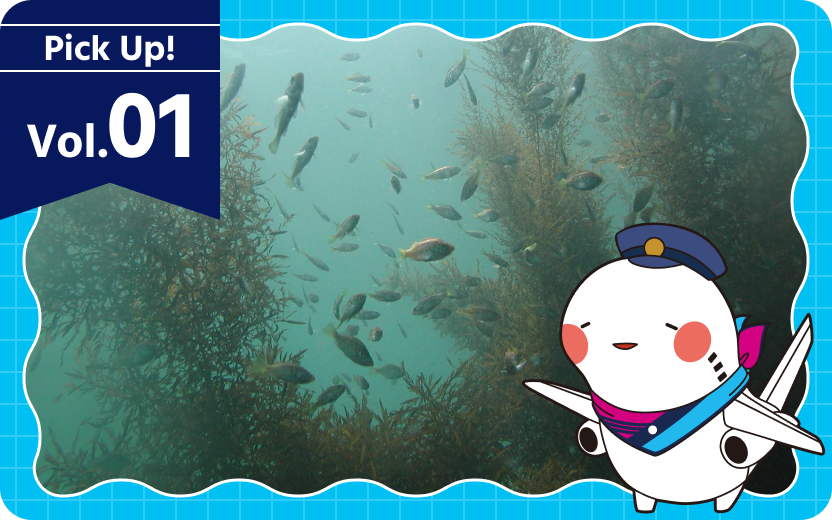
Kansai International Airport was built 5 km off the coast of Senshu in Osaka Bay, with the aim of mitigating aircraft noise issues.
We have been creating a seaweed bed environment around the airport islands since the planning phase of the airport construction to achieve harmony with the marine environment and co-existence with nature. Seaweed beds are attracting attention, not only as a habitat for sea life but also for the effect of photosynthesis on reducing CO2 emissions.
This is the seaweed beds at KIX!
The seaweed beds in a video
Seaweed beds at KIX
Kansai International Airport was built by reclaiming the land from the sea 18 to 20-meter deep on average, 5 km off the coast of Senshu in Osaka Bay. We adopted gently sloping rubble mound seawalls for most of the seawalls when building the airport island with the focus on the harmony with marine environment and making the airport more environmentally friendly from the planning phase of the airport construction. Other measures to promote the settlement of seaweed implemented at the time of the construction helped make the rich seaweed bed environment a cradle of life. We are still actively creating a rich seaweed bed environment around the airport islands to contribute to the living environment for marine life in Osaka Bay.
Seaweed beds contributing to the conservation of biodiversity in Osaka Bay
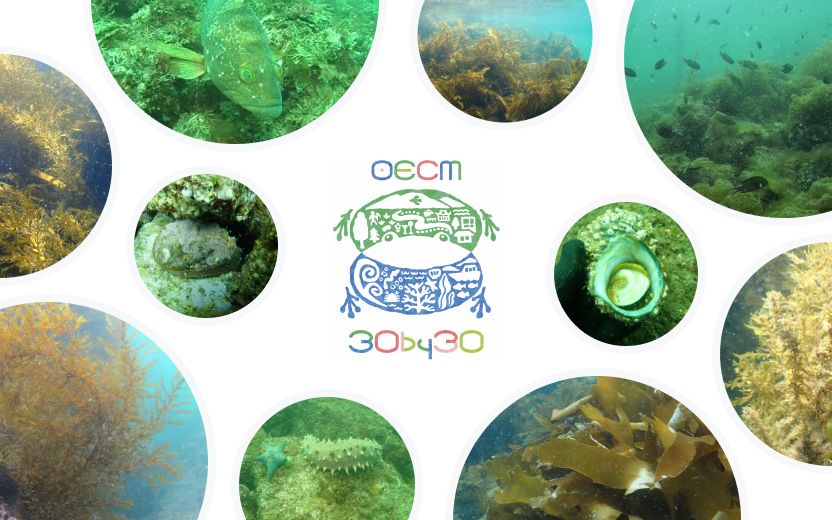
The seaweed beds of Kansai International Airport were highly recognized for their contribution to providing ecosystem services and conserving the biodiversity in Osaka Bay and were certified as a Nationally Certified Sustainably Managed Natural Site (areas where biodiversity is conserved by private initiatives) in October 2023 by the Ministry of the Environment.
Moreover, the seaweed beds were registered to the global database as an “Other Effective area-based Conservation Measure” (OECM: areas other than protected areas that contribute to biodiversity conservation) in August 2024, making it possible for us to make concrete contribution to the global goals for biodiversity conservation, including “30by30 target”.
Rich seaweed beds with numbers
Area of the seaweed beds at Kansai International Airport
One of the major characteristics of the seaweed bed of Kansai International Airport is that we have long been monitoring the environment and maintaining the stable seaweed environment. We started the monitoring survey in 1989 to understand the environment, following the completion of the First Island and after the start of providing seeds. This monitoring survey we have been doing for more than 30 years helps us create a rich seaweed bed environment. We have found in the monitoring survey of March 2025 that the area of our seaweed beds has expanded to 66 ha, which accounts for 14% of the total seaweed beds of Osaka Bay.
Biodiversity conservation

Recent surveys found 66 different seaweeds in different sizes.
We also found 31 types of reef-associated fish and shellfish that we did not see before the construction of the airport island in the muddy seabed. This shows that the seaweed bed plays an important role as a spawning ground for fish and shellfish.
- Major seaweed: Ecklonia cava, Undaria pinnatifida, Sargassum fulvellum
- Major creature: Epinephelus akaara, Semicossyphus reticulatus, Chromis notata
*The waters around Kansai International Airport are no-fishing zones.
Absorption of CO2 by seaweed
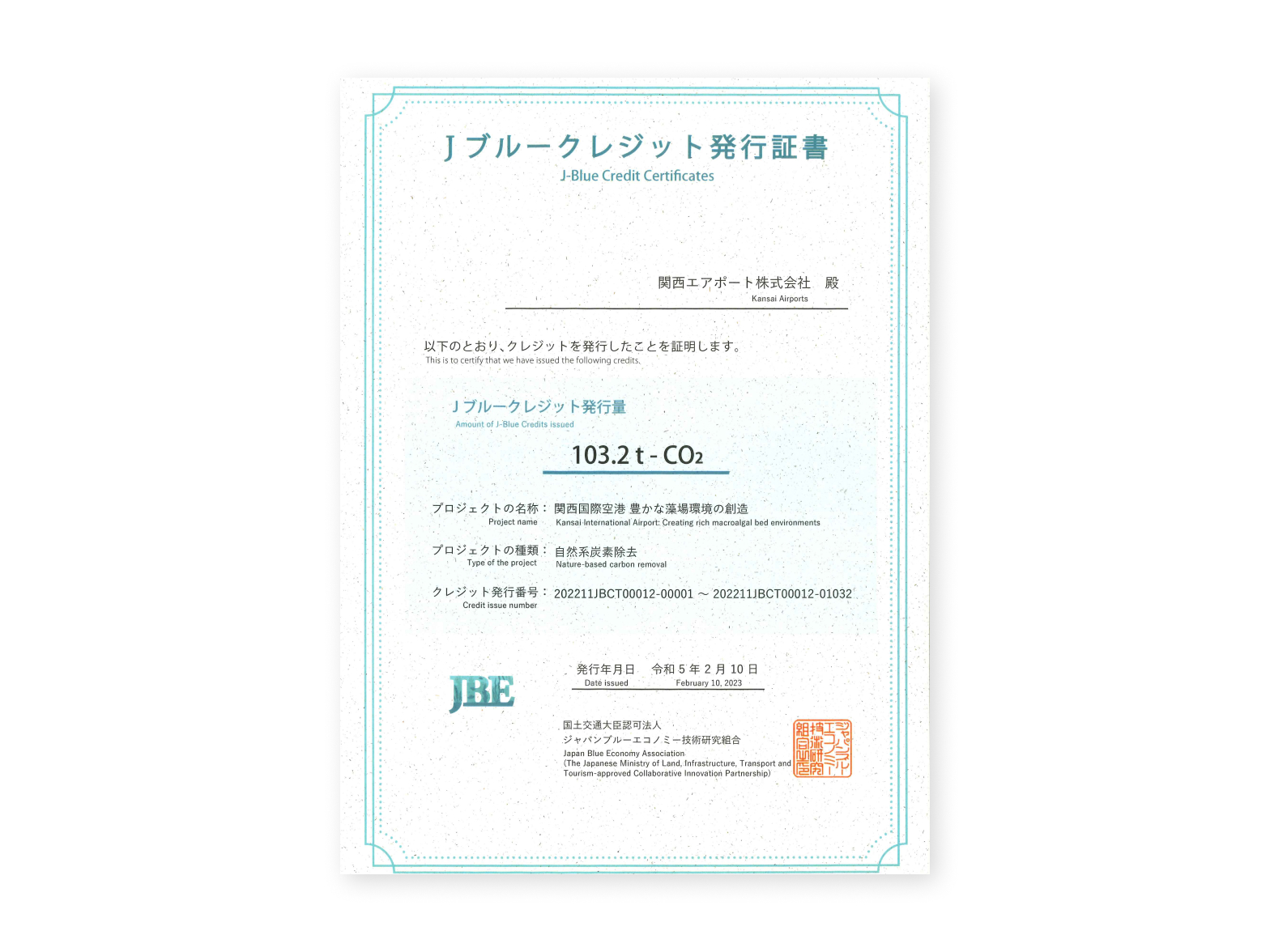
The CO2 absorbed by the seaweed growing around the seawalls of Kansai International Airport during the five years from FY2017 to FY2021 was certified to be 103.2 tons.
In recent years, there is a growing recognition on the importance of “blue carbon” (carbon absorbed into the marine ecosystem such as seaweed beds and shallow water as a measure to absorb CO2 to realize a decarbonized society. The various initiatives we have taken to create and maintain rich seaweed beds are now creating new value in contributing to the reduction of CO2 emissions.
Creating a rich seaweed bed environment
Nurturing the environment to help the growth of seaweed
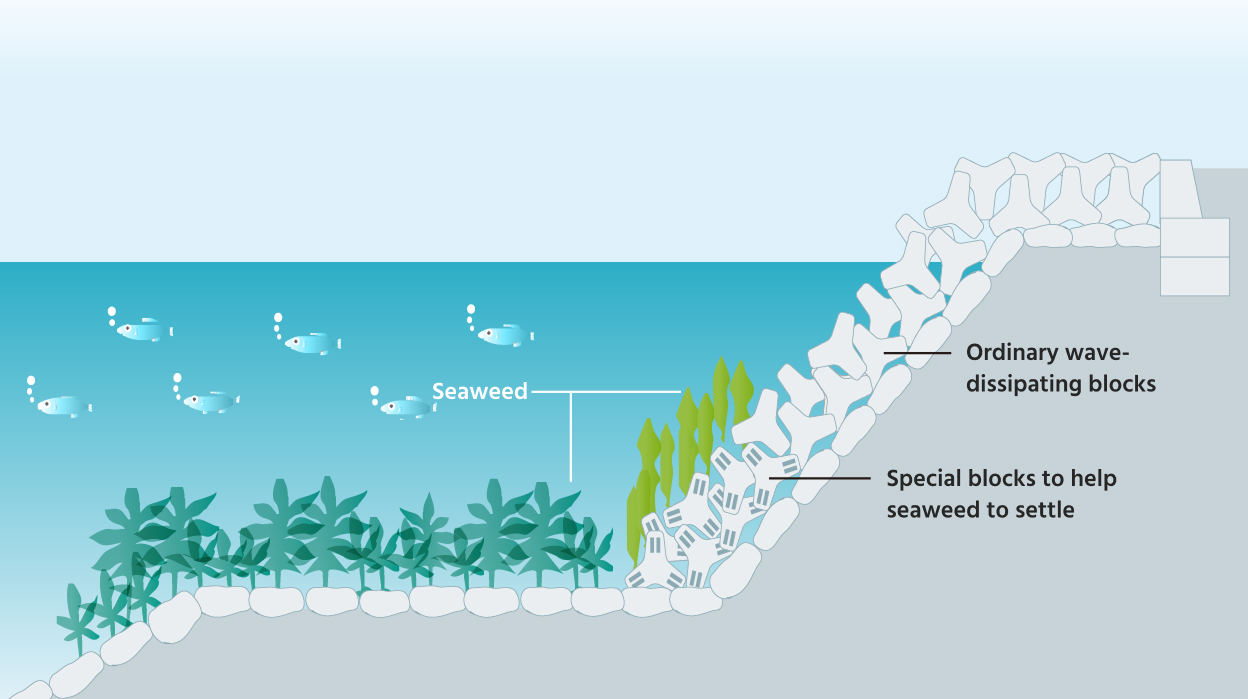
Gently sloping rubble mound seawalls
We adopted gently sloping rubble mound seawalls for most of the seawalls when building the airport island. The gently sloping rubble mound seawalls are different from vertical seawalls to the water surface in that the gentle slope help light dissipate more widely, thereby helping the growth of seaweed.
We actively took various measures, such as planting seaweed seeds and placing blocks to help seaweed settle, when building the seawalls, which led to the early development of the large-scale seaweed bed around artificial islands.
Conservation and expansion of the rich seaweed bed environment
We take measures to conserve the seaweed bed responding to changes in the external environment, looking at the changes in the seaweed bed environment we have identified in monitoring surveys, which we have been doing for more than 35 years, to maintain and further expand the seaweed bed environment of Kansai International Airport.
Transplanting seaweed to reinforce the function of the seawalls to protect the islands from disasters

Following Typhoon Jebi of September 2018, we installed new wave dissipating blocks from 2019 to 2021 as a measure to reinforce the disaster preparedness of the airport islands. Large-scale planting of large seaweed, such as perennial Ecklonia, which grows on the airport islands, contributed to maintaining a stable seaweed bed environment. We are also paying attention to such physical changes in the environment when taking measures to conserve the seaweed bed.
Conservation of the seaweed bed in response to environmental changes
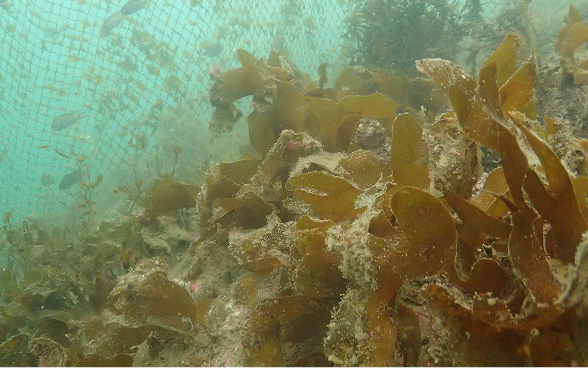
Please refer to our environmental reports for other initiatives and activities.

